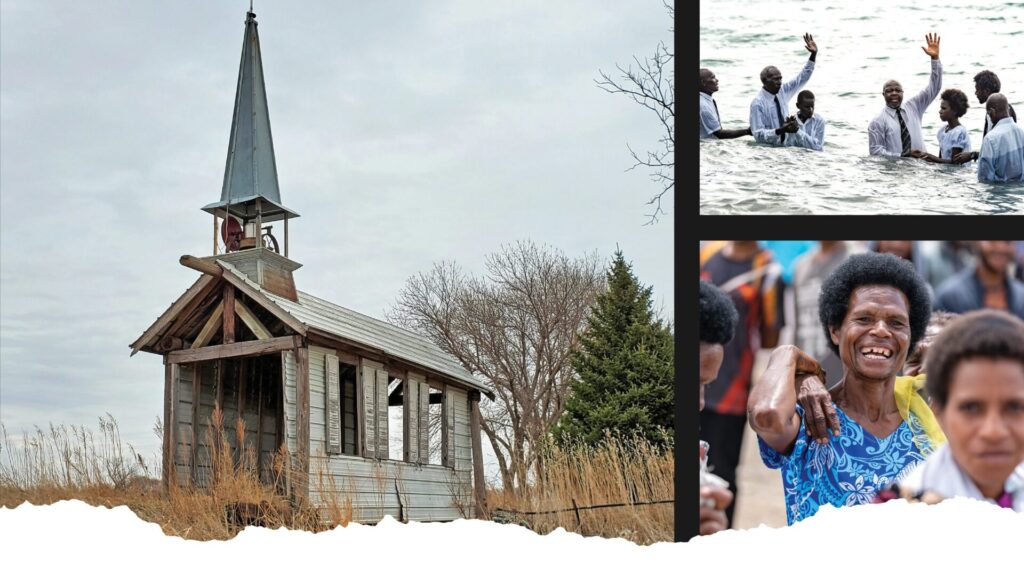In a world where medical miracles can be few and far between, the remarkable story of Tony*, a man who faced the life-threatening condition known as Toxic Epidermal Necrolysis (TEN), stands as a testament to the power of faith, dedicated healthcare professionals and the strength of the human spirit. TEN—an exceedingly rare disease affecting the mucosal membranes and the skin—had Tony’s life hanging in the balance, but with a combination of medical expertise and intercessory prayer, he defied the odds.
TEN is triggered most commonly by antibiotics, non-steroidal anti-inflammatory drugs and antiepileptics. With an incidence rate of just 0.4-1.6 cases per million in the population, it remains a little-known condition. However, for those who experience it, TEN is a harrowing ordeal.
Typically affecting adults over the age of 40, TEN often begins with flu-like symptoms, a fever and stinging eyes, before skin lesions become apparent. The lesions, which start as red, bruise-like flat areas, turn grey as the outer skin layer dies and separates from the inner layers, leading to the formation of painful blisters. This separation results in skin that appears scalded and is incredibly sensitive to even the slightest touch.
Tony’s journey with TEN began with a course of antibiotics for a leg infection caused by trauma. A week later, he developed a fever, felt generally unwell, and noticed a rash on his face, neck and upper chest. Doctors in Papua New Guinea, where he was based, decided he should be transported to Cairns Hospital for specialist care and his employer was able to arrange a medical evacuation the same day. The speed of this response was nothing short of miraculous, considering medical evacuations from Port Moresby usually take three to four days to organise.
Tony’s parents, Joan* and Tom*, flew to Cairns to be with him. That evening his condition deteriorated—his severe skin pain necessitating airway intubation and assisted breathing. He was transferred to the Royal Brisbane and Women’s Hospital (RBWH), where a team of experts led by a dermatologist, intensivist, ophthalmologist and dedicated nursing staff took charge of his care. His parents requested intercessory prayers from their families and close friends.
TEN had affected a staggering 95 per cent of Tony’s body surface area, making his condition extremely critical. The pain he endured was comparable to severe thermal burns, and the loss of the skin’s protective function made him susceptible to severe infection, which is often fatal.
With no specific treatment available for TEN, meticulous nursing care was vital for Tony’s survival. His daily regimen included burns baths and careful skin dressings to prevent further trauma to his fragile skin. These procedures, coupled with a multidisciplinary approach to managing his overall health, were essential for his recovery. Tony’s parents continuously prayed for his healing, and soon, their church member friends and contacts across the South Pacific Division joined in these intercessory prayers.
After three gruelling weeks in the ICU, Tony’s condition improved enough for him to be extubated, and his dermatologist marvelled at his rapid healing, declaring it a “miracle”. He was subsequently moved to the Burns Unit for further treatment and rehabilitation, as his prolonged immobility required active physiotherapy. Finally, after a month-long battle, Tony was discharged from the hospital.
Today, Tony is back in Papua New Guinea with his wife and family, enjoying good health with no lingering skin scarring or eye issues. While he did lose his fingernails and toenails, they are gradually regrowing, along with his body hair. Equally important, he now has a list of medications to avoid to prevent a recurrence of this rare condition.
In reflecting on his journey, Tony is deeply grateful to the medical professionals who cared for him. He expressed his thanks to everyone who offered up prayers on his behalf. He and his family acknowledge that it was God’s love, grace and mercy that saw him through this challenging ordeal.
In the words of Ephesians 3:20, “God is able to do exceedingly more than we ever ask or think.”
*Tony has requested the use of pseudonyms in this article, as family members wish to ensure that any praise and glory for his healing is attributed to God.
Dr John Lewis is a retired dermatologist and a member of Wahroonga church, NSW.






